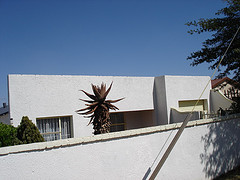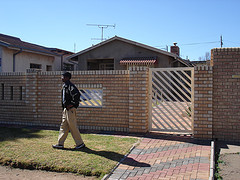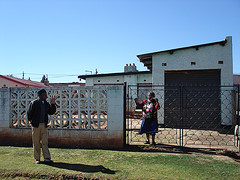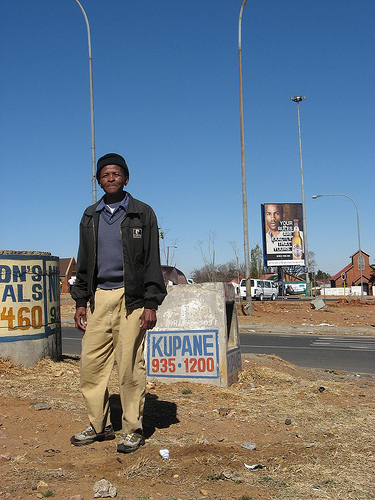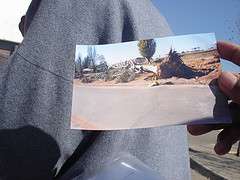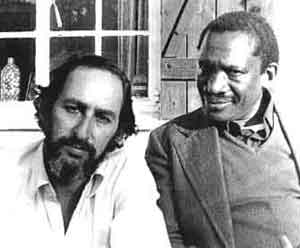PAC led 1960 Poisitve Action Campaign Route from Dube
Date: 08 August 2006
Route Guide: Raselepe Nthaledi (PAC member)
Documenter: Ismail Farouk
Facilitator: Ali Hlongwane, (curator HPMM)
On the 8th August 2006, Raselepe Nthaledi, Ali Hlongwane, and I retraced the 1960 Positive Action Campaign route through Soweto from NthalediâÂÂs house in Dube Soweto. Nthaledi was called upon early on March 21, 1960 by his comrade and then treasurer of the PAC, Jerry Leeuw, who lived down the road on the corner of Wycliff and Butshingi Streets.
Together, Leeuw and Raselepe walked up Tshabangu Street, turned left into Modiba Street and then right into Chalker Street and immediately right again into Merapelo Street. A little further on, they made a small detour to collect an old man who lived on Thabo Street. The old man was not feeling well and did not want to march so the two men continued to collect Mr. Nkula who lived closed by on Tsekedi Street before heading up the road to wait for other groups to arrive at Maponya Stores.
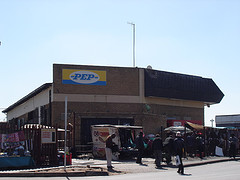
Figure 57: The bus stop near Maponya Stores where PAC members waited on route to Orlando Police Station.
Mr NthalediâÂÂs group joined other groups outside Maponya Stores and continued further on Pela Street past the HPMM on their way down towards the Klipspruit River. They crossed over and turned left into Mooki Street and walked up to the end point of the march at Orlando Police Station. A little while later he was arrested and detained for incitement.
Route Guide: Raselepe Nthaledi (PAC member)
Documenter: Ismail Farouk
Facilitator: Ali Hlongwane, (curator HPMM)
On the 8th August 2006, Raselepe Nthaledi, Ali Hlongwane, and I retraced the 1960 Positive Action Campaign route through Soweto from NthalediâÂÂs house in Dube Soweto. Nthaledi was called upon early on March 21, 1960 by his comrade and then treasurer of the PAC, Jerry Leeuw, who lived down the road on the corner of Wycliff and Butshingi Streets.
Together, Leeuw and Raselepe walked up Tshabangu Street, turned left into Modiba Street and then right into Chalker Street and immediately right again into Merapelo Street. A little further on, they made a small detour to collect an old man who lived on Thabo Street. The old man was not feeling well and did not want to march so the two men continued to collect Mr. Nkula who lived closed by on Tsekedi Street before heading up the road to wait for other groups to arrive at Maponya Stores.

Figure 57: The bus stop near Maponya Stores where PAC members waited on route to Orlando Police Station.
Mr NthalediâÂÂs group joined other groups outside Maponya Stores and continued further on Pela Street past the HPMM on their way down towards the Klipspruit River. They crossed over and turned left into Mooki Street and walked up to the end point of the march at Orlando Police Station. A little while later he was arrested and detained for incitement.
Labels: 21 March 1960, Other Routes, PAC, PAC Route
